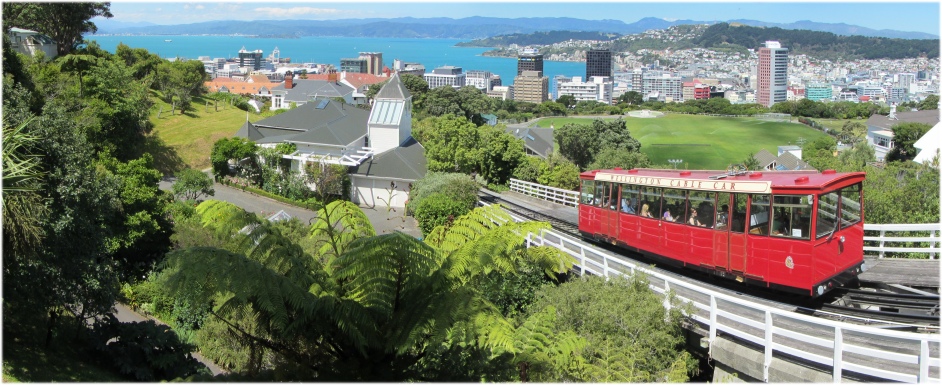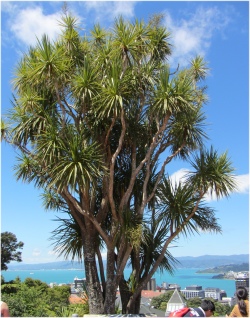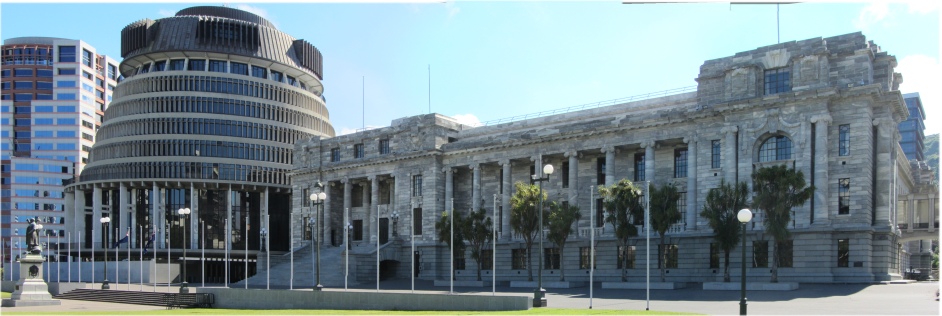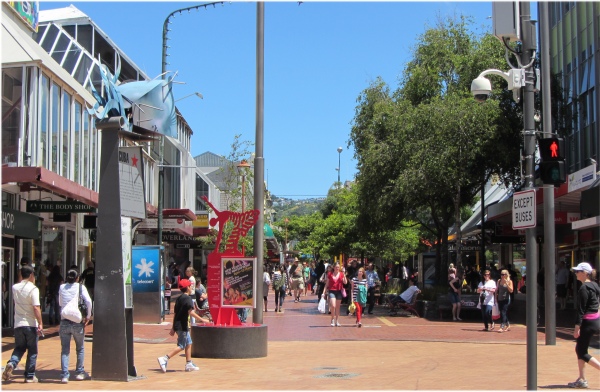 Wellington Harbour from the Botanic Gardens |
 Cabbage Tree |
I got the lowdown from the owner in the morning, as he went about emptying bottles, food and God knows what from the hot tub and pool. He had to turf one youth out in the early hours, and the rest of the gang did a lot of trashing to show their appreciation. I gave the owner my commiserations. Morons are universal I guess.
I popped over to see Roger and Fay, thanked them for sharing Christmas lunch and their time with me, and wished them well for the future. Then I hit the road for a 4.5 hours drive. I ploughed down SH1 along the Kapiti Coast, passing Kapiti Island, a predator-free environment, now home to many rare birds. The warm climate and relaxed lifestyle of this area had given birth to a luxurious style of country life; there were olive groves and feature gardens. Widening roads and denser traffic flow indicated I was approaching a large conurbation. 10km after Porinia, the road became an urban motorway, merging with SH2 in the process. I soon found myself surrounded by green hills, with a glistening waterfront to my left; I had arrived into the centre of Wellington.
Compared to the urban sprawl of Auckland, Wellington appeared to be a little gem: predominantly built upon reclaimed land, nestled in between bush draped hills and a magnificent harbour. The strong breeze also underlined its reputation as New Zealand's windy city, Windy Welly, fed by the chilled air funnelled through the Cook Strait.
Kupe discovered the natural harbour around 950 AD. Abel Tasman and Captain Cook sailed past the entrance, unable to enter due to the fierce winds. Settlers first arrived in the 1840s, and illegal buying of land by the New Zealand Company followed, the repercussions of which are still being played out. The city lies on ten major fault lines, and in 1855, a major earthquake raised some new land, which kick started a lengthy reclamation program. Wellington began to prosper, and due to its central location, took over the role of the nation's capital from Auckland in 1865. The city took its name from Arthur Wellesley, the 1st Duke of Wellington (1769-1852), victor of the Battle of Waterloo. The Duke's title comes from the town of Wellington in the county of Somerset, England.
 Wooden Houses in Thorndon Village |
 Old St Paul's Church |
 Parliament Buildings |
I was now faced with a dilemma, do I trust this guy, or do I drive miles out of the city to find a campsite. I had done enough driving for the day, so I made the decision to buy a 24 hour ticket, and if I do get caught out, try the ploy that I met some blokes, had one beer too many, and had wisely chosen not to drive. It took some nerve, particularly knowing that I would be effectively "freedom camping" in the middle of the capital city. I have been known to do stupid things.


